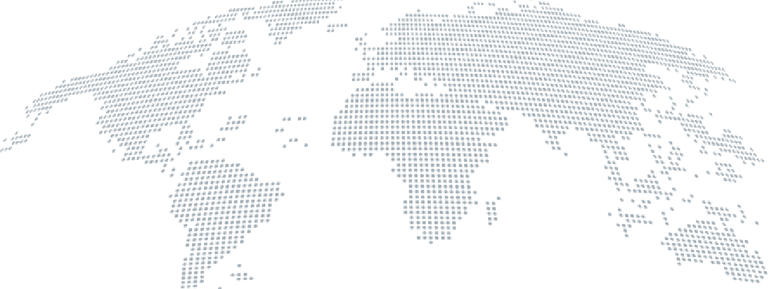Comprehensive Guide to Coating Thickness Measurement Standards and Procedures Worldwide
Nextagen Analytics
2/3/20253 min read


Introduction
Coating thickness measurement is an essential aspect of quality control and assurance across various industries, including automotive, aerospace, marine, infrastructure, and manufacturing. Accurate coating thickness measurement ensures compliance with industry standards, extends the lifespan of products, and enhances performance characteristics. This guide provides a comprehensive overview of the global standards for coating thickness measurement, including ASTM, ISO, NACE, IMO, NAVSEA (U.S. Navy), DIN, and more.
1. ASTM Standards for Coating Thickness Measurement
1.1 Key ASTM Standards
ASTM B499: Standard Test Method for Measurement of Coating Thicknesses by the Magnetic Method.
ASTM D7091: Standard Practice for Nondestructive Measurement of Dry Film Thickness of Nonmagnetic Coatings Applied to Ferrous and Non-Ferrous Metals.
ASTM E376: Standard Practice for Measuring Coating Thickness by Magnetic-Field or Eddy-Current (Electromagnetic) Test Methods.
ASTM G12: Standard Test Method for Nondestructive Measurement of Film Thickness of Pipeline Coatings.
ASTM D4138: Standard Test Methods for Measurement of Dry Film Thickness of Protective Coating Systems by Destructive Means.
1.2 Test Methods and Procedures
Magnetic Method (ASTM B499): Utilizes a magnetic gauge to determine the thickness of non-conductive coatings on ferrous metals.
Eddy Current Method (ASTM E376): Measures coating thickness on non-ferrous substrates using electromagnetic induction.
Destructive Cross-Sectioning (ASTM D4138): Involves cutting through the coating to measure thickness under a microscope.
1.3 Documentation and References
Calibration records for gauges
Inspection reports documenting coating thickness values
Compliance certificates referencing ASTM standards
2. ISO Standards for Coating Thickness Measurement
2.1 Key ISO Standards
ISO 2178: Non-Magnetic Coatings on Magnetic Substrates - Measurement of Coating Thickness - Magnetic Method.
ISO 2360: Non-Conductive Coatings on Non-Magnetic Electrically Conductive Substrates - Measurement of Coating Thickness - Eddy Current Method.
ISO 2808: Paints and Varnishes - Determination of Film Thickness.
ISO 19840: Paints and Varnishes - Corrosion Protection of Steel Structures by Protective Paint Systems - Measurement of Dry Film Thickness.
2.2 Test Methods and Procedures
Magnetic Method (ISO 2178): Similar to ASTM B499, this method applies to ferrous substrates.
Eddy Current Method (ISO 2360): Used for coatings on non-ferrous metals.
Microscopic Examination (ISO 2808): Destructive testing by cross-sectioning and measuring under a microscope.
2.3 Documentation and References
Calibration certificates for instruments
Records of test results according to ISO guidelines
Quality assurance documentation
3. NACE (National Association of Corrosion Engineers) Standards
3.1 Key NACE Standards
NACE SP0188: Discontinuity (Holiday) Testing of Protective Coatings.
NACE SP0288: Inspection of Linings on Steel and Concrete.
NACE SP0490: Measurement of Dry Film Thickness on Non-Conductive Coatings.
3.2 Test Methods and Procedures
Holiday Detection (SP0188): Identifies defects in coatings using high-voltage spark testing.
Dry Film Thickness Measurement (SP0490): Non-destructive testing for accurate thickness determination.
3.3 Documentation and References
Inspection logs
Calibration data sheets
Reports documenting compliance with NACE standards
4. IMO (International Maritime Organization) Standards
4.1 Key IMO Standards
IMO PSPC (Performance Standard for Protective Coatings) for Ballast Tanks.
IMO MSC.215(82): Performance standards for protective coatings applied to marine vessels.
4.2 Test Methods and Procedures
Coating application inspections
Dry film thickness (DFT) measurement using magnetic or eddy current gauges
Surface preparation assessments
4.3 Documentation and References
Compliance certificates
Inspection and maintenance logs
Calibration reports
5. NAVSEA (U.S. Navy) Standards
5.1 Key NAVSEA Standards
NAVSEA 009-32: Requirements for Coating System Application and Inspection.
MIL-DTL-24441: Coating, Epoxy-Polyamide Paint Systems.
5.2 Test Methods and Procedures
Coating thickness measurement using magnetic and eddy current methods
Destructive testing for validation purposes
5.3 Documentation and References
Inspection reports
Calibration certificates
Compliance documentation
6. DIN (Deutsches Institut für Normung) Standards
6.1 Key DIN Standards
DIN 50981: Measurement of Coating Thickness - Magnetic Method.
DIN 50984: Measurement of Coating Thickness - Eddy Current Method.
DIN EN ISO 2178: Magnetic method for thickness measurement.
6.2 Test Methods and Procedures
Magnetic induction and eddy current techniques
Destructive testing methods for cross-sectional analysis
6.3 Documentation and References
Calibration records
Inspection reports
Compliance documentation
7. Comparative Analysis of Standards
8. Best Practices for Coating Thickness Measurement
Calibration: Ensure regular calibration of instruments.
Environmental Conditions: Conduct measurements in controlled environments.
Multiple Measurements: Take multiple readings and average for accuracy.
Training: Ensure operators are trained and certified.
Documentation: Maintain thorough records for audits and compliance.
9. Conclusion
Accurate coating thickness measurement is essential for maintaining quality, ensuring regulatory compliance, and optimizing product performance. By adhering to global standards such as ASTM, ISO, NACE, IMO, NAVSEA, and DIN, industries can ensure reliable and actionable results. Implementing best practices and leveraging advanced technologies will further enhance the accuracy and efficiency of coating thickness measurement processes.
This guide serves as a resource for understanding the diverse standards, procedures, and documentation requirements associated with coating thickness measurement, empowering industries to achieve excellence in their quality control processes.
ROI calculations for choosing DIGITAL COATING THICKNESS Instrument with DATA LOGGING Software Vs DIGITAL COATING without DATA LOGGING AND software


Innovation House
Mon-Sat 9am-7pm

contact@nextagen.in

+91 2654059388
© 2024 Nextagen Analytics Private Limited . All Rights Reserved.